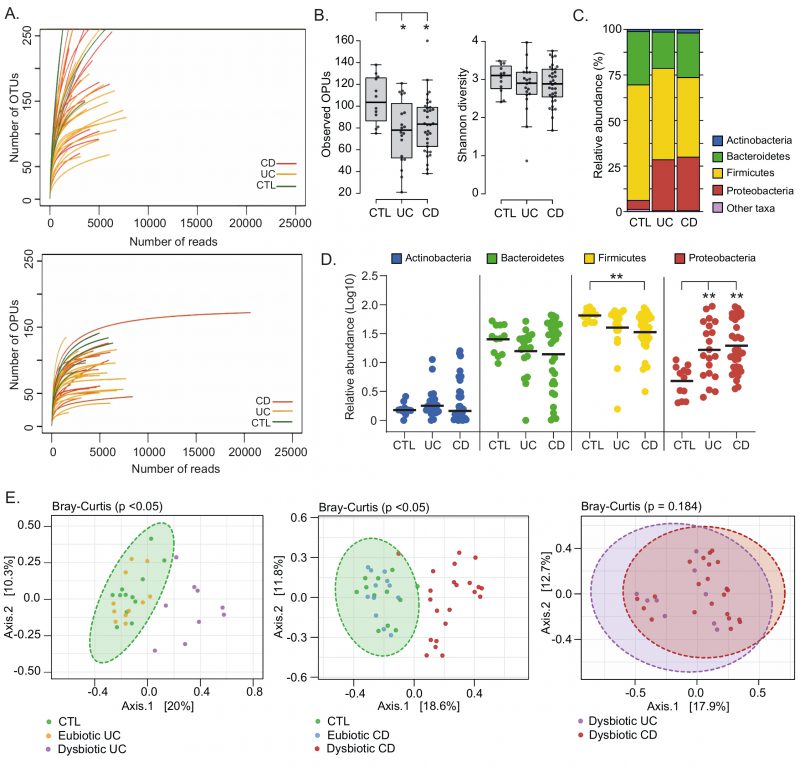Back to article: Landscapes and bacterial signatures of mucosa-associated intestinal microbiota in Chilean and Spanish patients with inflammatory bowel disease
FIGURE 1: Landscape of mucosa-associated intestinal microbiota of Chilean and Spanish patients with IBD.(A) Rarefaction curves based on OTUs and OPUs detected in colonic biopsies from patients with ulcerative colitis (UC; orange lines) and Crohn's Disease (CD; red lines), and control individuals (CTL; green lines). (B) Alpha diversity between patients and control individuals determined by the observed OPUs (Richness) and the Shannon index (Diversity). Significance: * p< 0.05, Kruskal-Wallis & Dunn's tests. (C) Relative abundances (%) of the most prevalent phyla. Phyla with abundances < 1% are represented as other taxa. (D) Comparison of the relative abundances (Log10) of the four most common phyla. Each data point corresponds to a sample and horizontal lines to the means. Significance: ** p< 0.005, Kruskal-Wallis & Dunn's tests. (E) A set of principal coordinate analysis (PCoA) plots based on Bray-Curtis distances showing the overall composition (beta diversity) of the microbiota in patients and controls. For a better visualization, individual PCoA plots are shown for the analysis of UC patients versus controls (left panel), CD patients versus controls (middle panel) and dysbiotic UC versus dysbiotic CD patients. Each data point corresponds to a sample, which is colored according to the disease phenotype and the microbiota status (dysbiotic or eubiotic). Ellipses represent a 95% CI around the cluster centroid.

